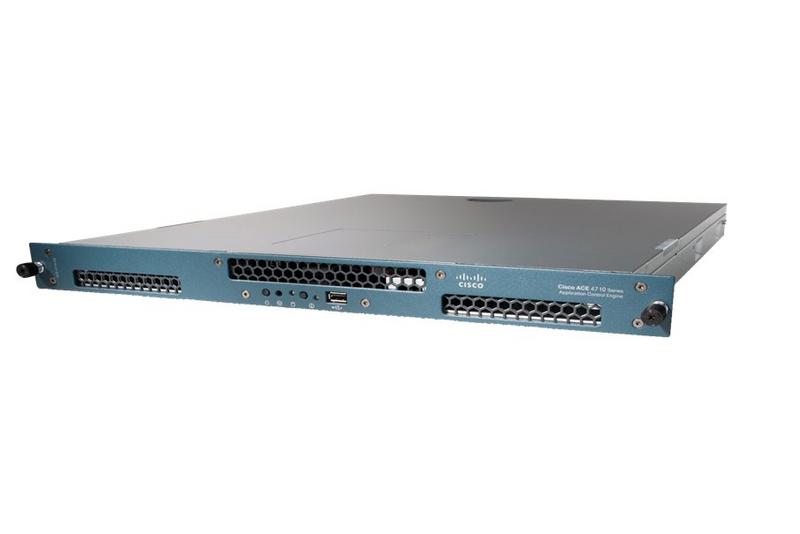Exclusive: Cisco Systems ACE 4710 review
Cisco claims the ACE 4710 has the most advanced application acceleration techniques on the market. Dave Mitchell evaluates.


The ACE 4710 impressed us mightily. It compares favourably on price with the competition, the optional application acceleration and optimization features are very sophisticated and the icing on the cake are the virtual appliance capabilities, which make this solution unique.

Cisco's new ACE (Application Control Engine) 4710 appliance is a standalone version of the ACE module for its Catalyst 6500 series switches and in this exclusive review we take a closer look at a product Cisco claims has the most advanced application acceleration techniques on the market. The 4710 is part of Cisco's 'Data Center 3.0' initiative, which aims to improve data centre efficiencies with virtualisation as a key focus
At its foundation the 4710 is a 1U rack chassis sporting a Cavium Nitrox Octeon accelerator card, which delivers four Gigabit Ethernet ports that can be bundled together using Cisco's EtherChannel and connected to a switch. The appliance can also be upgraded using licenses as the base model's throughput of 1Gbps can be pushed to 2Gbps, whilst its 100Mbps hardware compression can go to 500Mbps and then on to 1Gbps. Cisco is also running a promotion until the end of July where it is throwing in two day's free training on the 4710.
A key feature of the 4710 that currently makes it unique is appliance virtualisation. The base license includes six appliance virtualisations, where one is kept aside for management and the other five left to do with as you please. This adds new dimensions to load balancing as each virtual appliance can be configured to deliver guaranteed resources to applications such as bandwidth and memory. There's the green issue to consider as well, as appliance virtualisation can reduce power demands considerably.
Management for each virtual appliance is completely isolated and all configuration files and routing tables are kept totally separate as well. If one virtual appliance fails it will have no impact on the others so providing an ideal environment for running test configurations before going live. There's more, as snapshots can be taken for each virtual appliance enabling up to ten roll-back points to be created for each one.
Management security is extensive as the appliance ships with eight built-in roles and up to 64 can be created, making it easy to dish out different levels of access to various support staff. The appliance can be managed via the CLI or Cisco's browser based Device Manager and any changes made to access roles will be reflected across both interfaces.
Installation in the lab started with a brief visit to the CLI to run a quick setup routine for management access to the default virtual appliance. Next, we moved over to the Device Manager, which we found presented a tidy interface providing easy access to all features. Virtual appliances are a cinch to create as you add a new virtual context and provide details such as the VLANs associated with the context, a management IP address and access restrictions.
You then need to assign resource classes, which determine how the virtual context handles traffic. There's plenty to play with here as you can limit physical memory, set percentages for the number of connections for accelerated applications and management links, puts restrictions on simultaneous connections and decide on available bandwidth.
Sign up today and you will receive a free copy of our Future Focus 2025 report - the leading guidance on AI, cybersecurity and other IT challenges as per 700+ senior executives
Dave is an IT consultant and freelance journalist specialising in hands-on reviews of computer networking products covering all market sectors from small businesses to enterprises. Founder of Binary Testing Ltd – the UK’s premier independent network testing laboratory - Dave has over 45 years of experience in the IT industry.
Dave has produced many thousands of in-depth business networking product reviews from his lab which have been reproduced globally. Writing for ITPro and its sister title, PC Pro, he covers all areas of business IT infrastructure, including servers, storage, network security, data protection, cloud, infrastructure and services.
-
 ‘1 engineer, 1 month, 1 million lines of code’: Microsoft wants to replace C and C++ code with Rust by 2030 – but a senior engineer insists the company has no plans on using AI to rewrite Windows source code
‘1 engineer, 1 month, 1 million lines of code’: Microsoft wants to replace C and C++ code with Rust by 2030 – but a senior engineer insists the company has no plans on using AI to rewrite Windows source codeNews Windows won’t be rewritten in Rust using AI, according to a senior Microsoft engineer, but the company still has bold plans for embracing the popular programming language
By Ross Kelly Published
-
 Google drops $4.75bn on data center and energy firm Intersect
Google drops $4.75bn on data center and energy firm IntersectNews The investment marks the latest move from Google to boost its infrastructure sustainability credentials
By Nicole Kobie Published
-
 OpenAI says prompt injection attacks are a serious threat for AI browsers – and it’s a problem that’s ‘unlikely to ever be fully solved'
OpenAI says prompt injection attacks are a serious threat for AI browsers – and it’s a problem that’s ‘unlikely to ever be fully solved'News OpenAI details efforts to protect ChatGPT Atlas against prompt injection attacks
By Nicole Kobie Published
